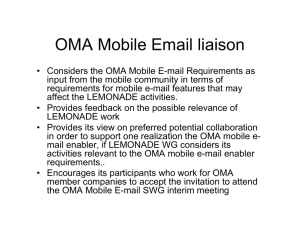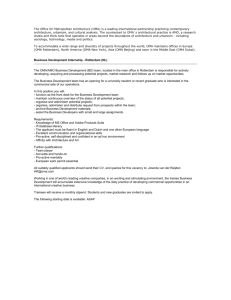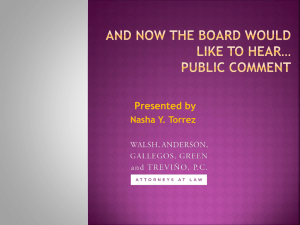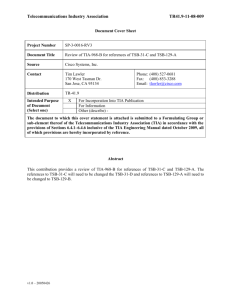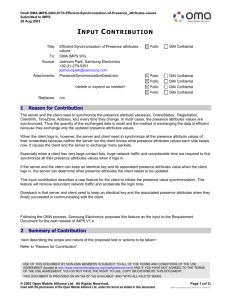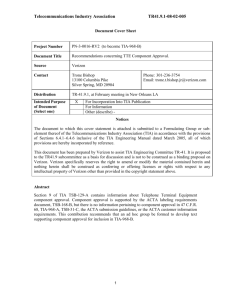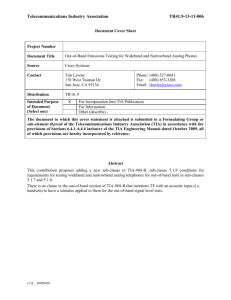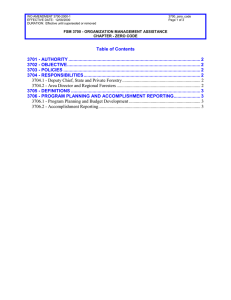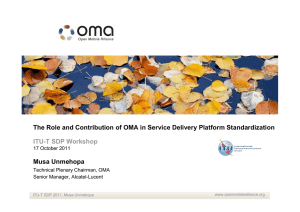TR41.4-05-08-007 Contribution - Telecommunications Industry
advertisement
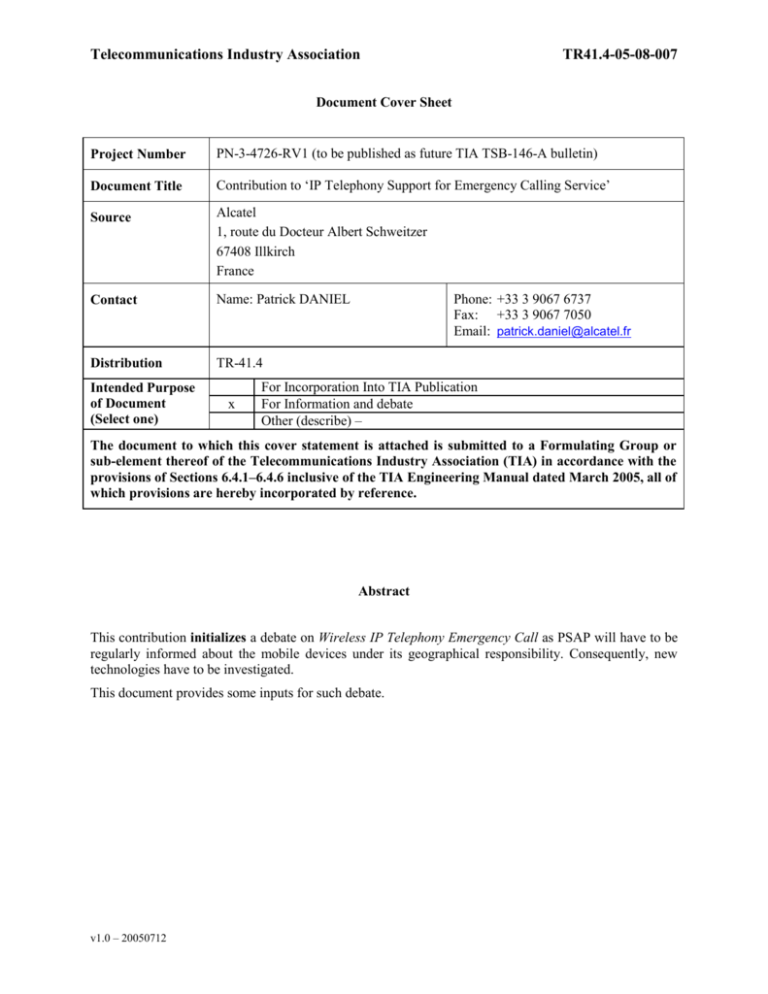
Telecommunications Industry Association TR41.4-05-08-007 Document Cover Sheet Project Number PN-3-4726-RV1 (to be published as future TIA TSB-146-A bulletin) Document Title Contribution to ‘IP Telephony Support for Emergency Calling Service’ Source Alcatel 1, route du Docteur Albert Schweitzer 67408 Illkirch France Contact Name: Patrick DANIEL Distribution TR-41.4 Intended Purpose of Document (Select one) x Phone: +33 3 9067 6737 Fax: +33 3 9067 7050 Email: patrick.daniel@alcatel.fr For Incorporation Into TIA Publication For Information and debate Other (describe) – The document to which this cover statement is attached is submitted to a Formulating Group or sub-element thereof of the Telecommunications Industry Association (TIA) in accordance with the provisions of Sections 6.4.1–6.4.6 inclusive of the TIA Engineering Manual dated March 2005, all of which provisions are hereby incorporated by reference. Abstract This contribution initializes a debate on Wireless IP Telephony Emergency Call as PSAP will have to be regularly informed about the mobile devices under its geographical responsibility. Consequently, new technologies have to be investigated. This document provides some inputs for such debate. v1.0 – 20050712 Telecommunications Industry Association TR41.4-05-08-007 A new challenge to investigate: mobile positioning 1 Introduction Mobile positioning introduces more complexity to Emergency call scenario. Tracking is a complex process as it includes new challenges like: - support for different indoor and outdoor networks and positioning technologies - interoperability between service providers - compliance with country regulations on data privacy The today status regarding the puzzle to set up shows that some elementary inputs like positioning syntaxes and associated services are mostly defined (use of MLP technology for example) while global Emergency call routing infrastructure on IP networking is clearly immature for mobile devices. More, the size of the enterprises contributes to different positioning business models leading to different architecture complexities: - In case of campus networks like hospital & university, Indoor and Outdoor position engines could be hosted and managed within this campus - In case of mid –size enterprise, Indoor could be internally hosted and managed while Outdoor could be supplied through an application subscription (supplied by either Telecom Operator or Application Service Provider) The global picture regarding the public infrastructure is consequently blurred. The main issue remains how to be sure that a PSAP will be regularly informed about the mobile devices under its geographical responsibility. Another aspect concerns the location of home or remote workers especially for IP emergency calls. These types of users are connected via an ISP or to a visited network to their enterprise network and the location information should be acquired prior to call emergency service. Therefore ISP or visited network should provide a standard and secure way to request such location information. 2 Working groups to follow - ETSI NGN / EMTEL is a special committee that addresses a broad spectrum of aspects related to the use of telecom services in emergency situations - IETF ECRIT. ‘Emergency Context Resolution with Internet Technologies’ - IETF GeoPriv working group looking generically at location services (privacy) - IETF SIP/SIPPING working groups defining protocol for initiating IP session - OMA (Open Mobile Alliance) facilitates global user adoption of mobile data services by specifying market driven mobile service enablers that ensure service interoperability across devices, geographies, service providers, operators, and networks - Open Geospatial Consortium (OGC) is leading the development of standards for geospatial and location based services. More precisely, OpenLS provides a standard set of services that can be used by governments and their security forces to increase productivity and make better decisions. A high level look at these uses includes ‘Response – Emergency dispatch’ and ‘Public Safety – Emergency notification’ Page 2 Telecommunications Industry Association 3 TR41.4-05-08-007 Technologies to investigate It looks suitable to firstly investigate application-level protocols for getting the position of mobile devices independent of underlying network technology. The Open Mobile Alliance has already started to specify such protocols like MLP (Mobile Location Protocol) and RLP (Roaming Location Protocol) where defined services also match the indoor requests. - ETSI ELP ? - IETF HELD (HTTP Enabled Location Delivery) which is a mechanism that employs HTTP as a GeoPriv 'using protocol' to deliver location information relating to a client-device from a Location Server - IETF SIP and SIPPING - OMA MLP - OMA RLP - OMA PCP (Privacy Checking Protocol) for interface between a Location Server and Privacy Checking Entity - OMA SUPL (Secure User Plane Location architecture) ? - OpenLS Services End of document Page 3
